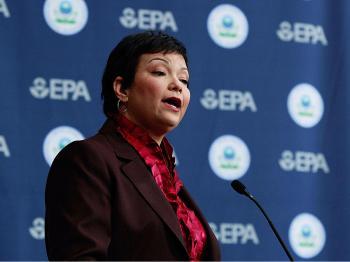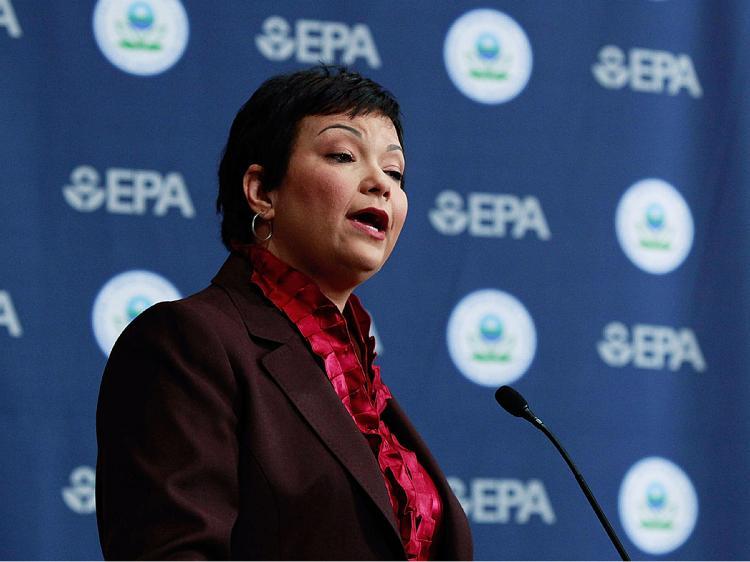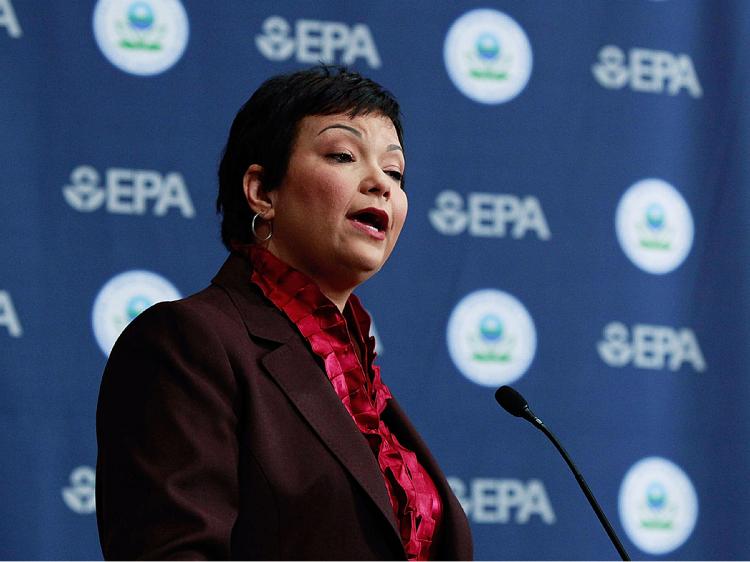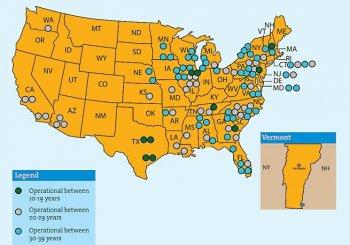The Great Lakes might be getting a new lease on life, if the governors of the states that border it and the Environmental Protection Agency (EPA) have anything to say about it.
The EPA’s administrator, Lisa P. Jackson, released the Great Lakes Restoration Initiative (GLRI) action plan on Monday. The Initiative, which got $475 million from the Obama administration in February, will focus on five major problems facing the Great Lakes.
The first set of issues is monitoring, protecting, and improving toxic substances in “areas of concern,” which include thirty toxic hot spot ‘Areas of Concern’ (AOC) throughout the United States.
Toxic substances such as mercury are at the center of much of the fish consumption advisories issued in Canada and the United States.
Despite the declining rate of toxic pollution in the Great Lakes as a result of previous efforts, the report points to a “legacy contamination,” or the “pollutants largely left over from past practices, but that continue to recirculate through the ecosystem” as a persisting problem that needs immediate attention.
The second focus area of GLRI action plan is to combat the detrimental effects of invasive species such as Asian carp. These invasive species are currently undermining efforts for restoring the Great Lakes.
In light of this, the plan looks to take a “zero-tolerance policy” on the introduction of invasive species, which can set off the balance of the ecosystem by choking out native species and upsetting the natural order of the food web.
Efforts to curb invasive species will be primarily geared toward prevention by means of closer monitoring.
Wisconsin Gov. Jim Doyle, who chairs the Council on the Great Lakes Governors, received the GLRI action plan warmly.
“Wisconsin is defined by the Great Lakes, and one of our greatest responsibilities is to preserve this important freshwater resource for future generations,” said Gov. Doyle in a press release. “This Action Plan sets a strong course of action as we confront tremendous challenges to not only protect, but also restore the Great Lakes.”
The Great Lakes are the largest group of freshwater lakes on earth and hold 95 percent of the United States’ surface fresh water. In addition to being a major source of fresh water, recreation related to the Great Lakes is a large force in the economy of surrounding states.
Recreational boating generates nearly $16 billion in spending on boats and boating activities in a single year, according to the GRLI report. This supports almost 107,000 jobs, which increases to 250,000 jobs when secondary impacts are also considered.
The third area of focus will be in the field of “Near shore health” and “non point source pollution.” This includes pollution which manifests on beaches and which can result in “outbreaks of botulism and beach closures.” Non point sources offer some of the greatest challenges to restoration efforts.
The fourth area of focus in the GLRI action plan is to address growing problems facing the wildlife and habitants of the Great Lakes as a result of the above mentioned problems stressing the ecosystem. These efforts will include enhancing and monitoring the progress of native species and protecting them from invasive species.
Fifth, the action plan will focus on a slew of measures that include accountability, education, monitoring, evaluation, communication, and partnerships. This includes monitoring and overlooking scientific inquiry and development in field of Great Lakes research.
The action plan was developed through the collaborative effort of 16 federal agencies working with local representatives at various levels.
The plan will utilize the $475 million from the Obama administration to issue grants to agencies and institutions, whose proposals are most in agreement with furthering the improvement of the five focus areas.
The EPA, along with the Task Force, will work to assess the progress of each of these agencies through various concrete measures.
The plan is intended to be implemented starting the Fiscal Year 2010 and extend into 2014 plans to act as “guidance for collaborative restoration work with participants to advance restoration.” It is also expected to help advance the Great Lakes Water Quality Agreement that exists with Canada.
The EPA’s administrator, Lisa P. Jackson, released the Great Lakes Restoration Initiative (GLRI) action plan on Monday. The Initiative, which got $475 million from the Obama administration in February, will focus on five major problems facing the Great Lakes.
The first set of issues is monitoring, protecting, and improving toxic substances in “areas of concern,” which include thirty toxic hot spot ‘Areas of Concern’ (AOC) throughout the United States.
Toxic substances such as mercury are at the center of much of the fish consumption advisories issued in Canada and the United States.
Despite the declining rate of toxic pollution in the Great Lakes as a result of previous efforts, the report points to a “legacy contamination,” or the “pollutants largely left over from past practices, but that continue to recirculate through the ecosystem” as a persisting problem that needs immediate attention.
The second focus area of GLRI action plan is to combat the detrimental effects of invasive species such as Asian carp. These invasive species are currently undermining efforts for restoring the Great Lakes.
In light of this, the plan looks to take a “zero-tolerance policy” on the introduction of invasive species, which can set off the balance of the ecosystem by choking out native species and upsetting the natural order of the food web.
Efforts to curb invasive species will be primarily geared toward prevention by means of closer monitoring.
Wisconsin Gov. Jim Doyle, who chairs the Council on the Great Lakes Governors, received the GLRI action plan warmly.
“Wisconsin is defined by the Great Lakes, and one of our greatest responsibilities is to preserve this important freshwater resource for future generations,” said Gov. Doyle in a press release. “This Action Plan sets a strong course of action as we confront tremendous challenges to not only protect, but also restore the Great Lakes.”
The Great Lakes are the largest group of freshwater lakes on earth and hold 95 percent of the United States’ surface fresh water. In addition to being a major source of fresh water, recreation related to the Great Lakes is a large force in the economy of surrounding states.
Recreational boating generates nearly $16 billion in spending on boats and boating activities in a single year, according to the GRLI report. This supports almost 107,000 jobs, which increases to 250,000 jobs when secondary impacts are also considered.
The third area of focus will be in the field of “Near shore health” and “non point source pollution.” This includes pollution which manifests on beaches and which can result in “outbreaks of botulism and beach closures.” Non point sources offer some of the greatest challenges to restoration efforts.
The fourth area of focus in the GLRI action plan is to address growing problems facing the wildlife and habitants of the Great Lakes as a result of the above mentioned problems stressing the ecosystem. These efforts will include enhancing and monitoring the progress of native species and protecting them from invasive species.
Fifth, the action plan will focus on a slew of measures that include accountability, education, monitoring, evaluation, communication, and partnerships. This includes monitoring and overlooking scientific inquiry and development in field of Great Lakes research.
The action plan was developed through the collaborative effort of 16 federal agencies working with local representatives at various levels.
The plan will utilize the $475 million from the Obama administration to issue grants to agencies and institutions, whose proposals are most in agreement with furthering the improvement of the five focus areas.
The EPA, along with the Task Force, will work to assess the progress of each of these agencies through various concrete measures.
The plan is intended to be implemented starting the Fiscal Year 2010 and extend into 2014 plans to act as “guidance for collaborative restoration work with participants to advance restoration.” It is also expected to help advance the Great Lakes Water Quality Agreement that exists with Canada.





Friends Read Free